
Penpot is the first open-source design and prototyping platform for product teams that allows true collaboration between designers and developers. The Penpot mission is to provide an open source & open standards platform to bring collaboration between designers and developers to the next level. In this step by step guide I will show you how to install Penpot on your Synology NAS using Docker & Portainer.
STEP 1
Please Support My work by Making a Donation.
STEP 2
Install Portainer using my step by step guide. If you already have Portainer installed on your Synology NAS, skip this STEP. Attention: Make sure you have installed the latest Portainer version.
STEP 3
Make sure you have a synology.me Wildcard Certificate. Follow my guide to get a Wildcard Certificate. If you already have a synology.me Wildcard certificate, skip this STEP.
STEP 4
Go to Control Panel / Login Portal / Advanced Tab / click Reverse Proxy. Follow the instructions in the image below.
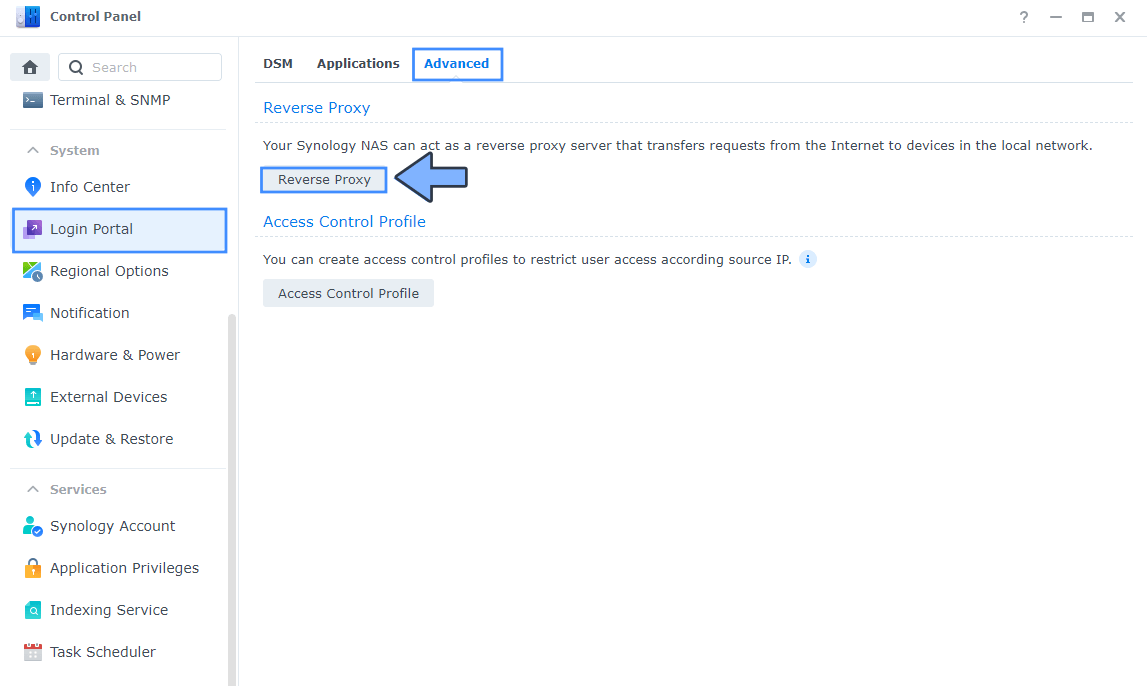
STEP 5
Now click the “Create” button. Follow the instructions in the image below.
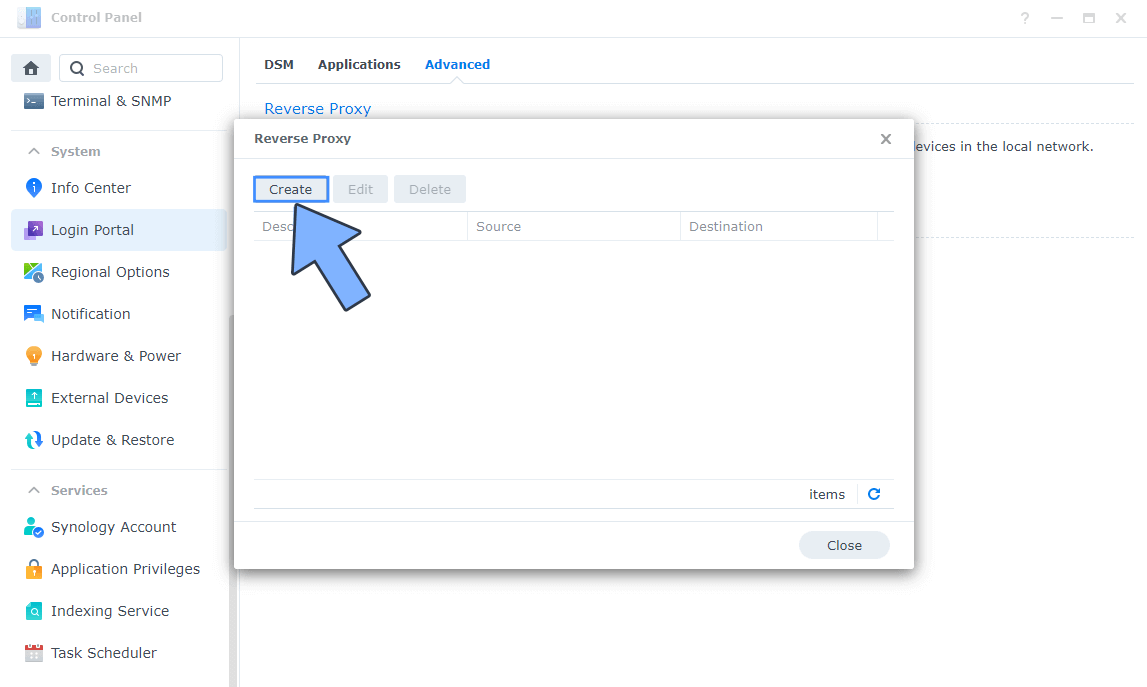
STEP 6
After you click the Create button, the window below will open. Follow the instructions in the image below.
On the General area, set the Reverse Proxy Name description: type in Penpot. After that, add the following instructions:
Source:
Protocol: HTTPS
Hostname: penpot.yourname.synology.me
Port: 443
Check Enable HSTS
Destination:
Protocol: HTTP
Hostname: localhost
Port: 9010
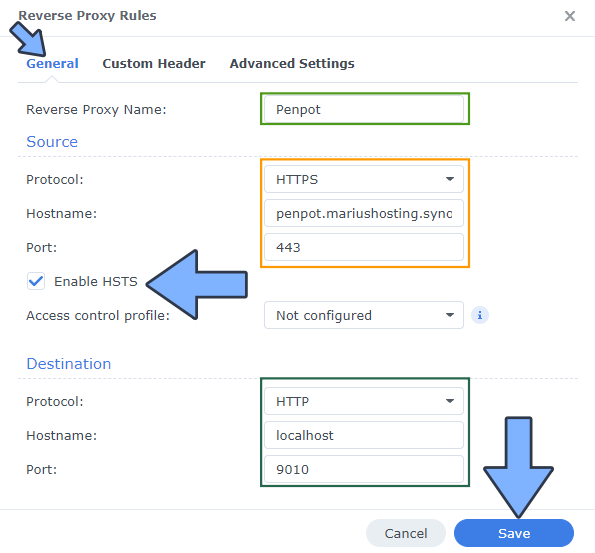
STEP 7
On the Reverse Proxy Rules click the Custom Header tab. Click Create and then, from the drop-down menu, click WebSocket. After you click on WebSocket, two Header Names and two Values will be automatically added. Click Save. Follow the instructions in the image below.

STEP 8
Go to Control Panel / Network / Connectivity tab/ Check Enable HTTP/2 then click Apply. Follow the instructions in the image below.
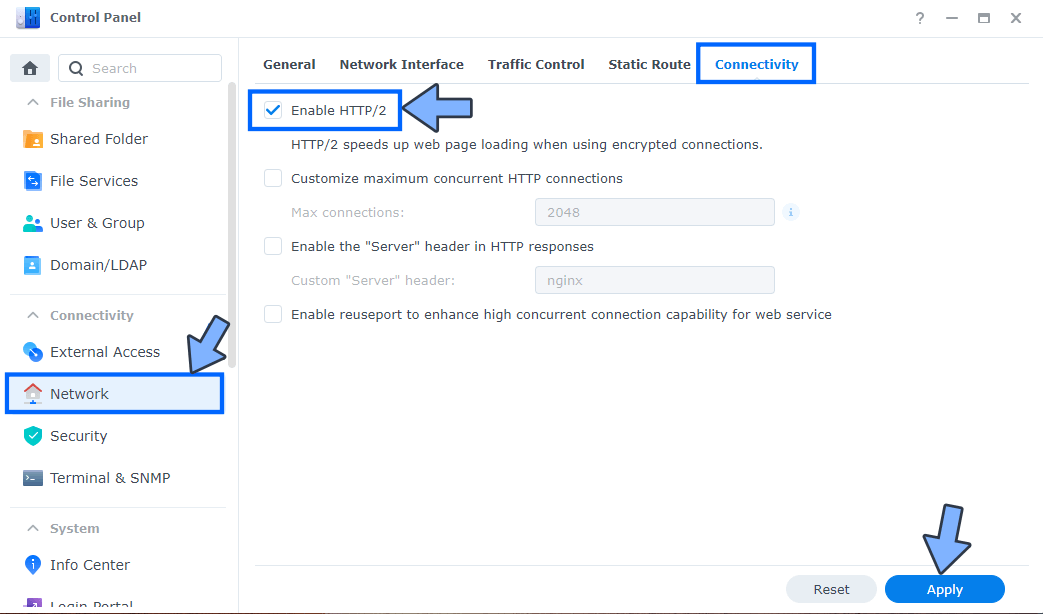
STEP 9
Go to Control Panel / Security / Advanced tab/ Check Enable HTTP Compression then click Apply. Follow the instructions in the image below.
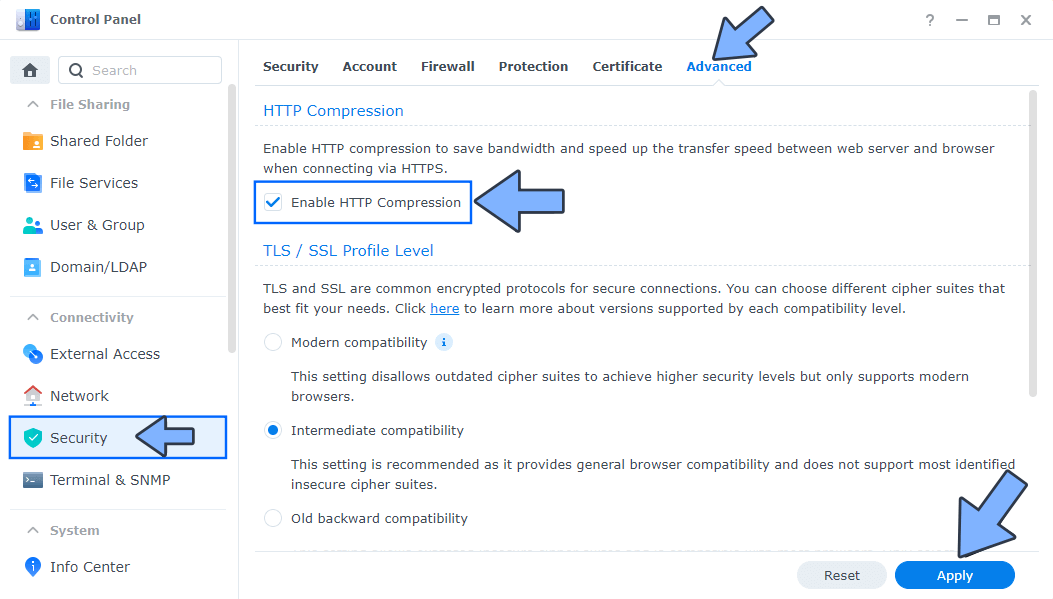
STEP 10
Go to File Station and open the docker folder. Inside the docker folder, create one new folder and name it penpot. Follow the instructions in the image below.
Note: Be careful to enter only lowercase, not uppercase letters.
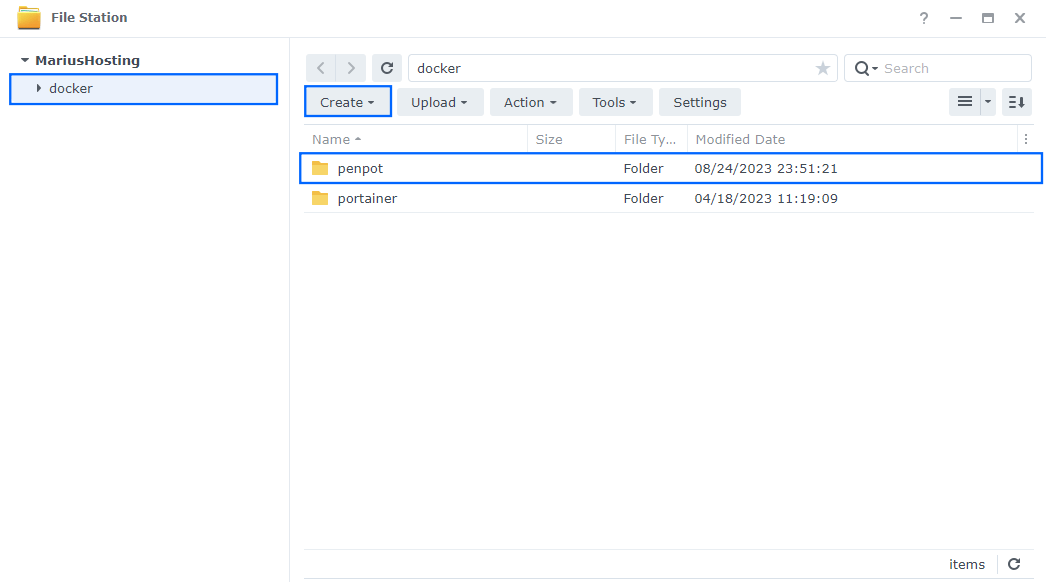
STEP 11
Now create three new folders inside the penpot folder that you created at STEP 10 and name them assets, db, valkey. Follow the instructions in the image below.
Note: Be careful to enter only lowercase, not uppercase letters.
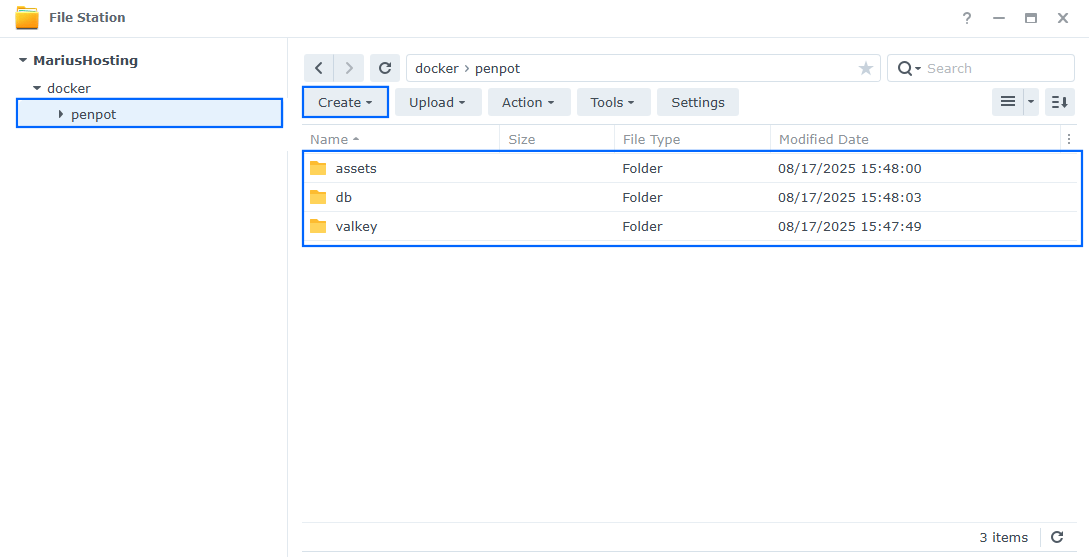
STEP 12
Follow my step by step guide on how to activate SMTP for your Gmail account. This step is mandatory. Note: If you don’t want to use the easiest way for SMTP with Google and you already have SMTP details from your own Mail Server, you can just skip this STEP and use your personalized email SMTP details instead.
STEP 13
Log into Portainer using your username and password. On the left sidebar in Portainer, click on Home then Live connect. Follow the instructions in the image below.

On the left sidebar in Portainer, click on Stacks then + Add stack. Follow the instructions in the image below.

STEP 14
In the Name field type in penpot. Follow the instructions in the image below.
services:
redis:
image: valkey/valkey:latest
container_name: Penpot-Valkey
command:
- /bin/sh
- -c
- redis-server --requirepass redispass
hostname: penpot-valkey
security_opt:
- no-new-privileges:true
read_only: false
user: 1026:100
healthcheck:
test: ["CMD-SHELL", "redis-cli ping || exit 1"]
volumes:
- /volume1/docker/penpot/valkey:/data:rw
environment:
TZ: Europe/Bucharest
restart: on-failure:5
db:
image: postgres:17
container_name: Penpot-DB
hostname: penpot-db
security_opt:
- no-new-privileges:true
healthcheck:
test: ["CMD", "pg_isready", "-q", "-d", "penpot", "-U", "penpotuser"]
timeout: 45s
interval: 10s
retries: 10
volumes:
- /volume1/docker/penpot/db:/var/lib/postgresql/data:rw
environment:
POSTGRES_DB: penpot
POSTGRES_USER: penpotuser
POSTGRES_PASSWORD: penpotpass
POSTGRES_INITDB_ARGS: --data-checksums
restart: on-failure:5
penpot-exporter:
image: penpotapp/exporter:main
container_name: Penpot-EXPORTER
hostname: penpot-exporter
security_opt:
- no-new-privileges:true
environment:
PENPOT_PUBLIC_URI: https://penpot.yourname.synology.me
PENPOT_REDIS_URI: redis://:redispass@penpot-valkey/0
restart: on-failure:5
penpot-backend:
image: penpotapp/backend:main
container_name: Penpot-BACKEND
user: 0:0
hostname: penpot-backend
security_opt:
- no-new-privileges:true
volumes:
- /volume1/docker/penpot/assets:/opt/data/assets:rw
environment:
PENPOT_FLAGS: enable-registration enable-login-with-password disable-email-verification enable-prepl-server enable-smtp
PENPOT_SECRET_KEY: 5qZoBr1PtuOCBATWssP8C3Ippjov33eK
## The PREPL host. Mainly used for external programmatic access to penpot backend
## (example: admin). By default it listen on `localhost` but if you are going to use
## the `admin`, you will need to uncomment this and set the host to `0.0.0.0`.
# - PENPOT_PREPL_HOST=0.0.0.0
PENPOT_PUBLIC_URI: https://penpot.yourname.synology.me
PENPOT_DATABASE_URI: postgresql://penpot-db/penpot
PENPOT_DATABASE_USERNAME: penpotuser
PENPOT_DATABASE_PASSWORD: penpotpass
PENPOT_REDIS_URI: redis://:redispass@penpot-valkey/0
PENPOT_ASSETS_STORAGE_BACKEND: assets-fs
PENPOT_STORAGE_ASSETS_FS_DIRECTORY: /opt/data/assets
PENPOT_TELEMETRY_ENABLED: false
PENPOT_SMTP_HOST: smtp.gmail.com
PENPOT_SMTP_DEFAULT_FROM: Your-own-gmail-address
PENPOT_SMTP_DEFAULT_REPLY_TO: Your-own-gmail-address
PENPOT_SMTP_PORT: 587
PENPOT_SMTP_USERNAME: Your-own-gmail-address
PENPOT_SMTP_PASSWORD: Your-own-app-password
PENPOT_SMTP_TLS: true
PENPOT_SMTP_SSL: false
restart: on-failure:5
depends_on:
redis:
condition: service_healthy
db:
condition: service_healthy
penpot-frontend:
image: penpotapp/frontend:main
container_name: Penpot-FRONTEND
hostname: penpot-frontend
security_opt:
- no-new-privileges:true
ports:
- 9010:8080
volumes:
- /volume1/docker/penpot/assets:/opt/data/assets:rw
environment:
PENPOT_FLAGS: enable-registration enable-login-with-password
restart: on-failure:5
depends_on:
penpot-backend:
condition: service_started
penpot-exporter:
condition: service_started
Note: Before you paste the code above in the Web editor area below, change the value numbers for user with your own UID and GID values. (Follow my step by step guide on how to do this.) 1026 is my personal UID value and 100 is my personal GID value. You have to type in your own values.
Note: After you paste the code in the Web editor, change the value for TZ (Select your current Time Zone from this list).
Note: Before you paste the code above in the Web editor area below, change the value for PENPOT_PUBLIC_URI with your own synology.me DDNS with https:// at the beginning that you have previously created at STEP 6.
Note: Before you paste the code above in the Web editor area below, change the value for PENPOT_SECRET_KEY. (Generate your own 32 length PENPOT_SECRET_KEY.)
Note: Before you paste the code above in the Web editor area below, change the value for PENPOT_PUBLIC_URI with your own synology.me DDNS with https:// at the beginning that you have previously created at STEP 6.
Note: Before you paste the code above in the Web editor area below, change the value for PENPOT_SMTP_DEFAULT_FROM and type in your own Gmail address. STEP 12.
Note: Before you paste the code above in the Web editor area below, change the value for PENPOT_SMTP_DEFAULT_REPLY_TO and type in your own Gmail address. STEP 12.
Note: Before you paste the code above in the Web editor area below, change the value for PENPOT_SMTP_USERNAME and type in your own Gmail address. STEP 12.
Note: Before you paste the code above in the Web editor area below, change the value for PENPOT_SMTP_PASSWORD and type in your own Gmail app password. STEP 12.
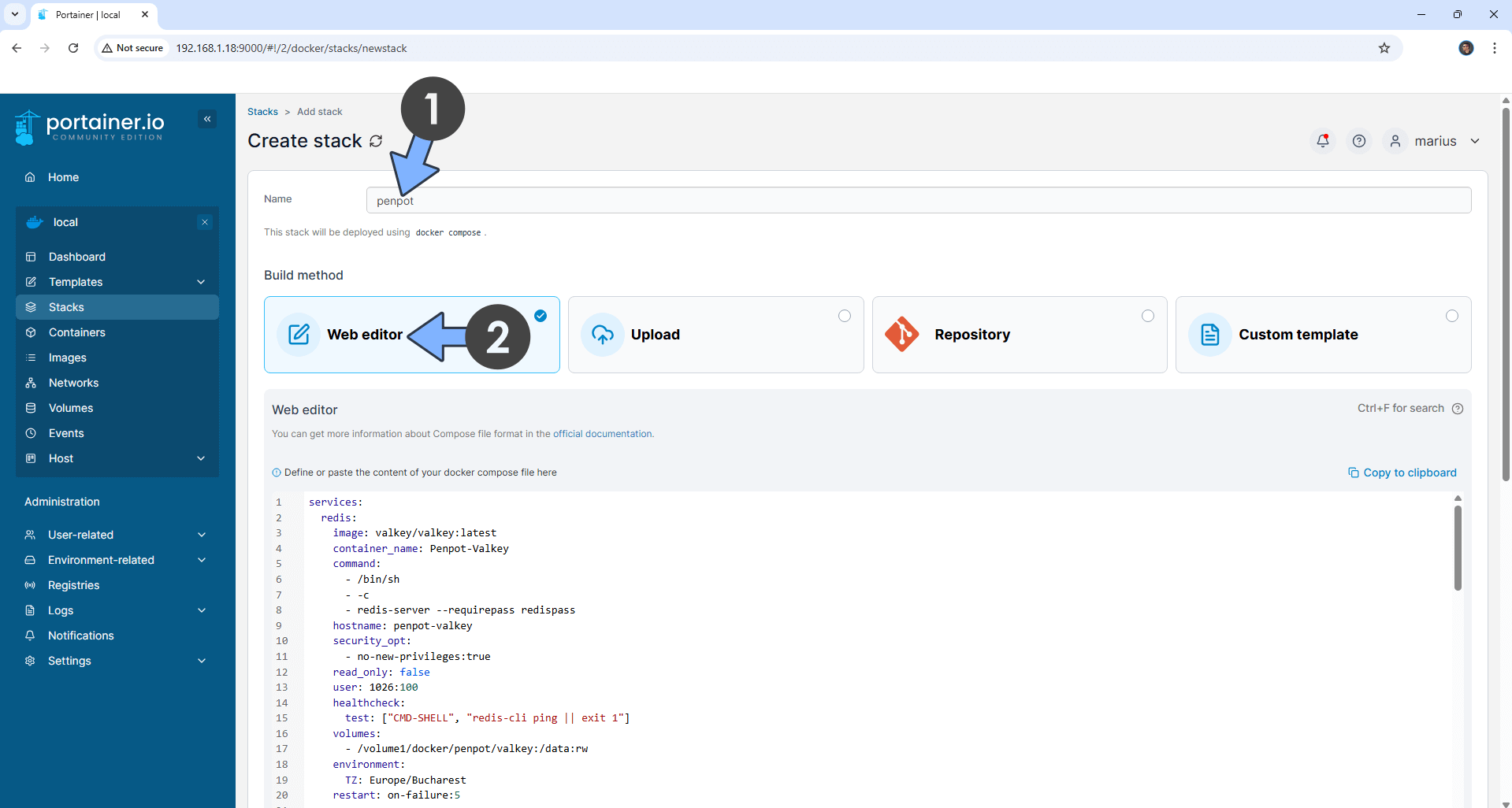
STEP 15
Scroll down on the page until you see a button called Deploy the stack. Click on it. Follow the instructions in the image below. The installation process can take up to a few minutes. It will depend on your Internet speed connection.
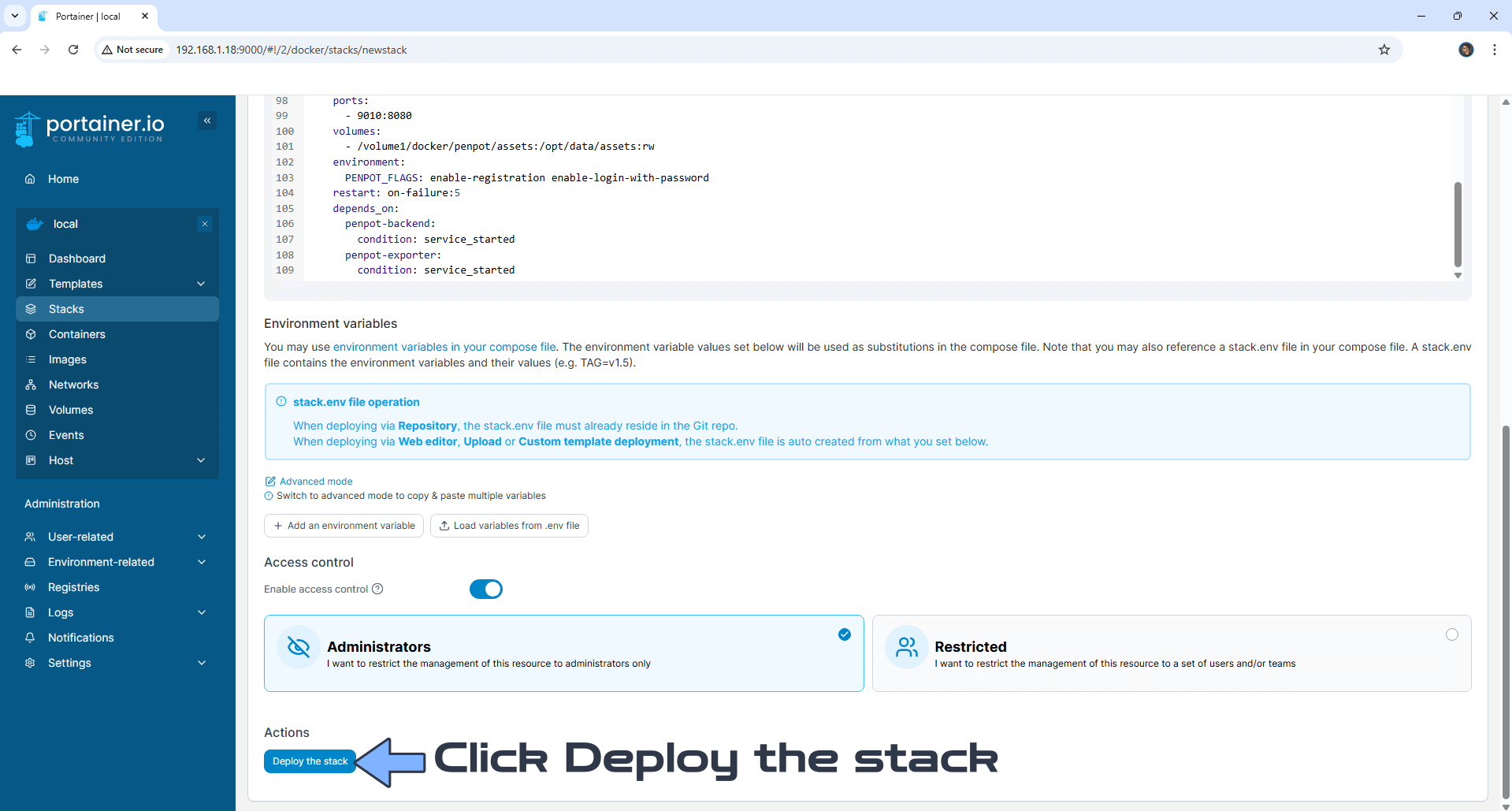
STEP 16
If everything goes right, you will see this message at the top right of your screen: “Success Stack successfully deployed“.

STEP 17
🟢Please Support My work by Making a Donation. Almost 99,9% of the people that install something using my guides forget to support my work, or just ignore STEP 1. I’ve been very honest about this aspect of my work since the beginning: I don’t run any ADS, I don’t require subscriptions, paid or otherwise, I don’t collect IPs, emails, and I don’t have any referral links from Amazon or other merchants. I also don’t have any POP-UPs or COOKIES. I have repeatedly been told over the years how much I have contributed to the community. It’s something I love doing and have been honest about my passion since the beginning. But I also Need The Community to Support me Back to be able to continue doing this work.
STEP 18
Please wait approximately 2-3 minutes for the installation to be completed or you will get a blank bad gateway error page if you try to connect too soon. Now open your browser and type in your HTTPS/SSL certificate like this https://penpot.yourname.synology.me that you have previously created at STEP 6. In my case it’s https://penpot.mariushosting.synology.me If everything goes right, you will see the Penpot registration page. Click Create an account. Follow the instructions in the image below.
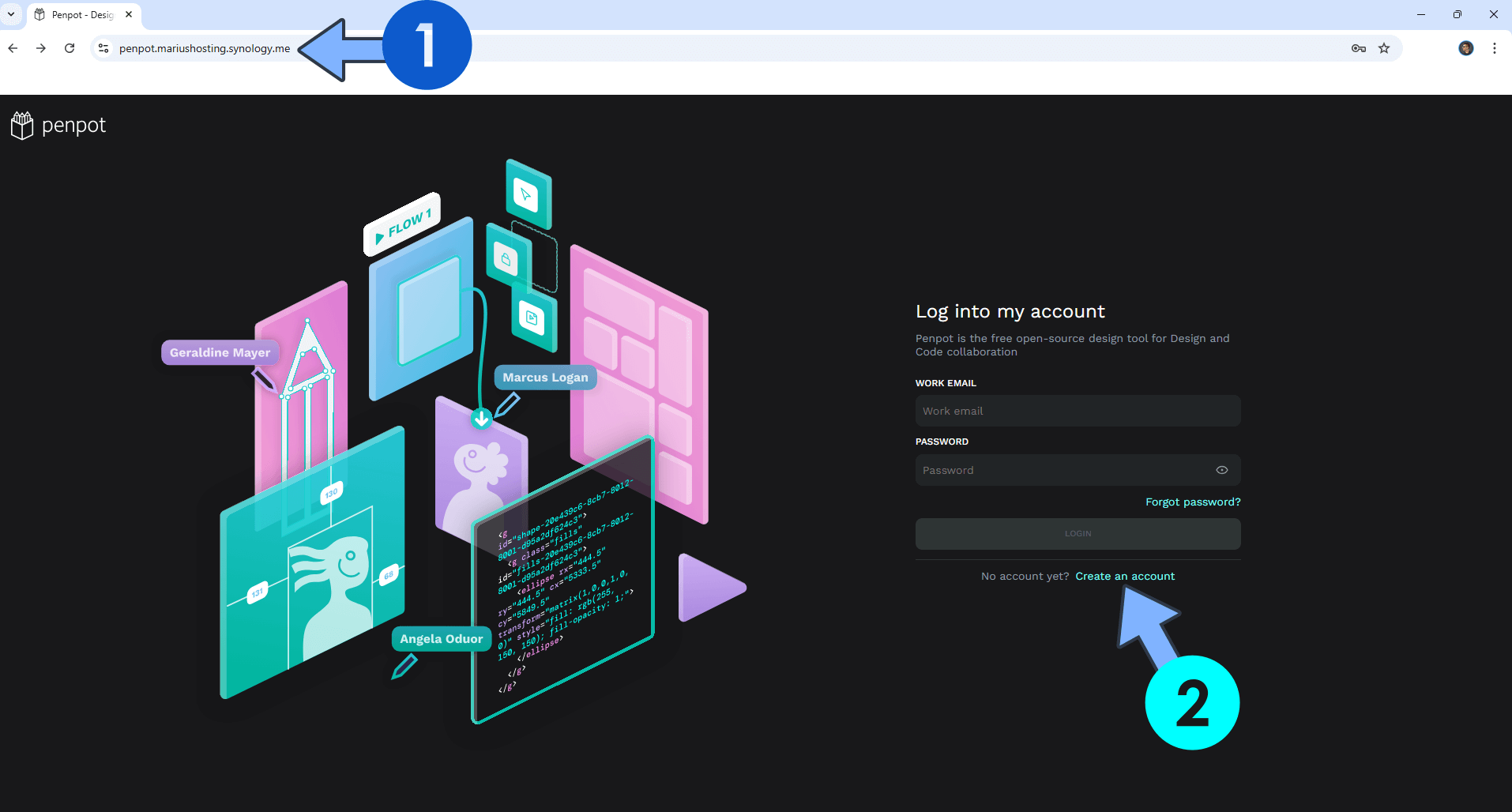
STEP 19
Type in your own Email and Password then click Create an account. Follow the instructions in the image below.
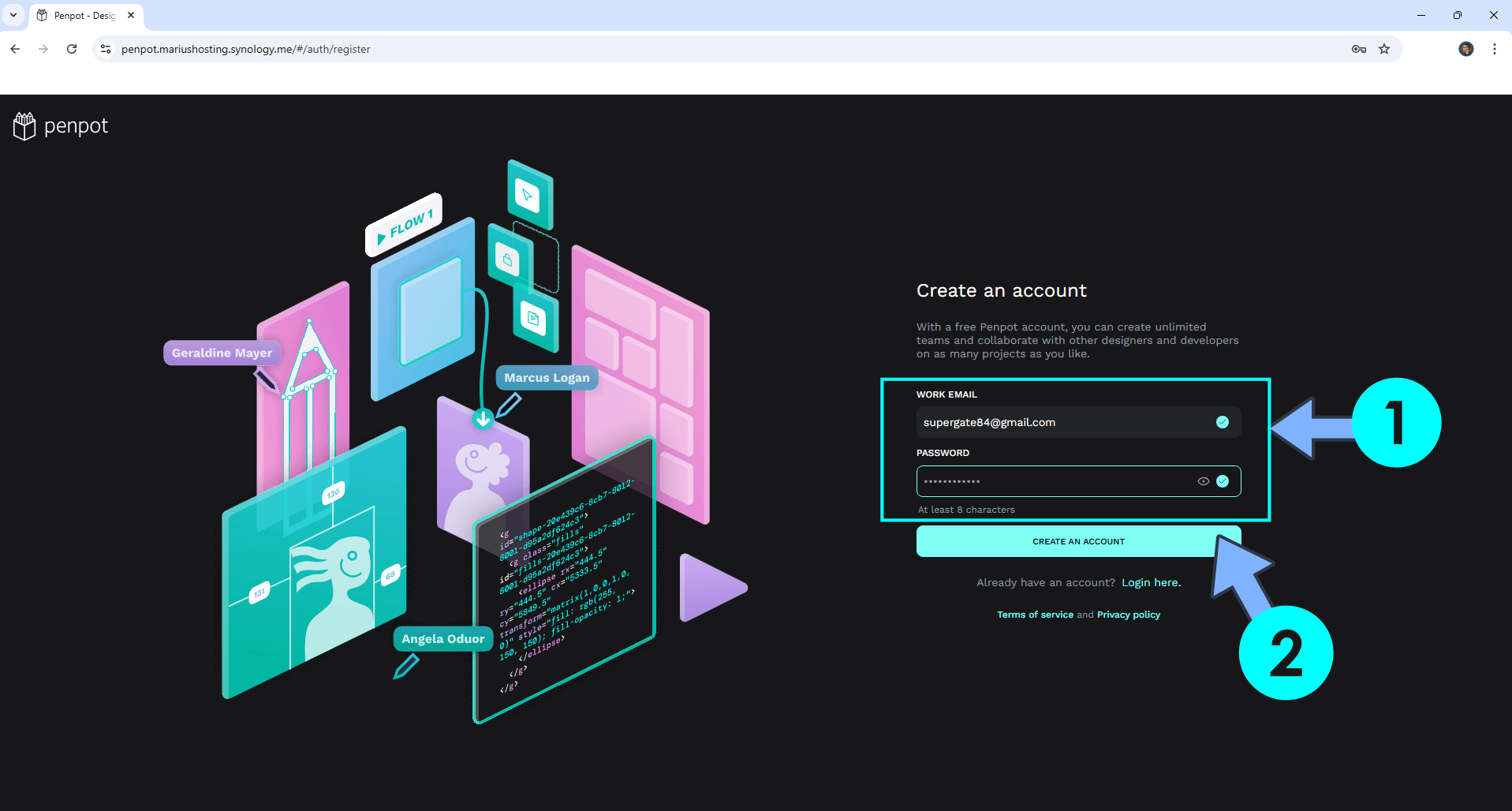
STEP 20
Type in your Full Name then click Create an account. Follow the instructions in the image below.
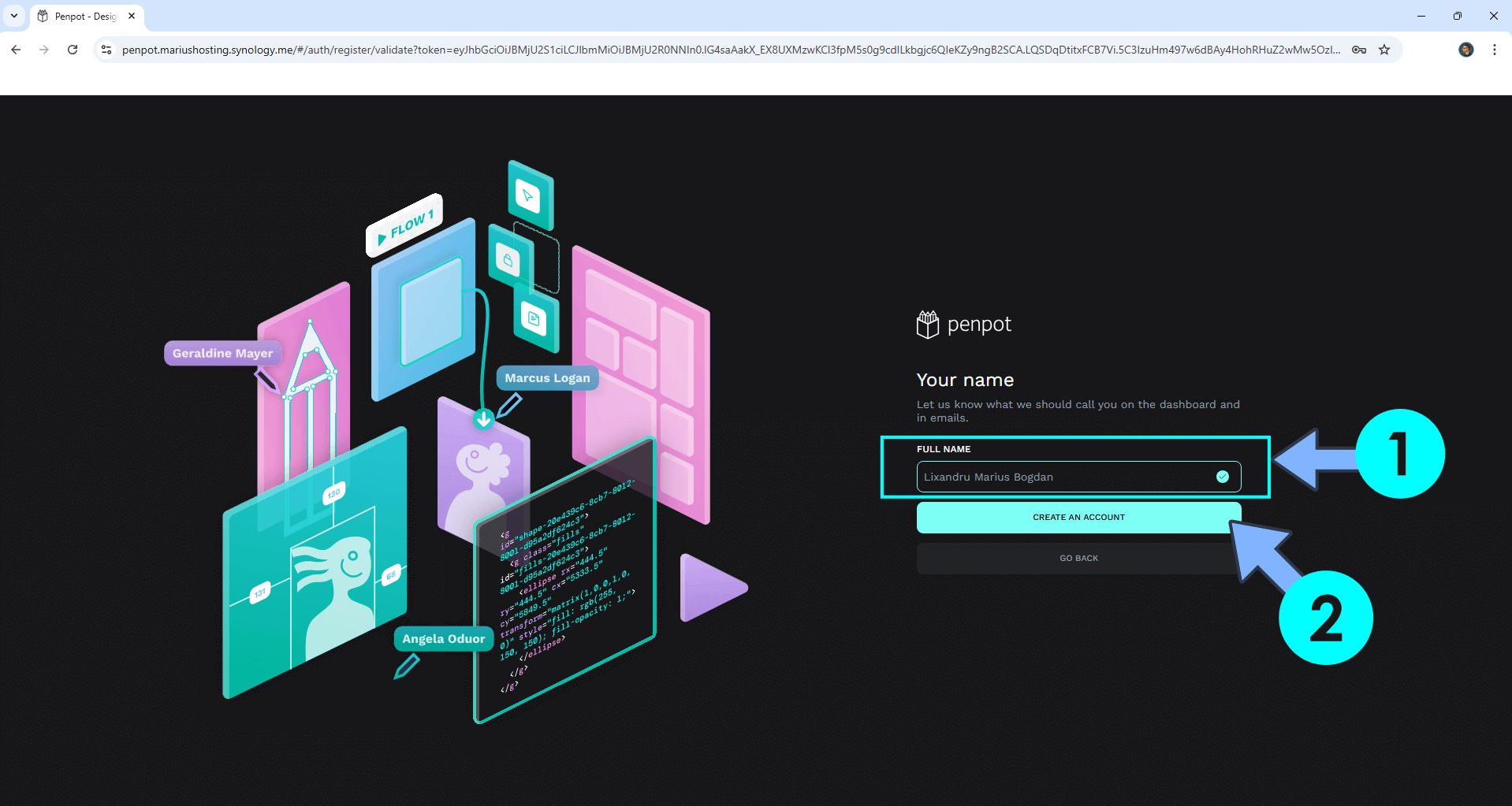
STEP 21
Complete the Penpot Survey.
STEP 22
Your Penpot dashboard at a glance!
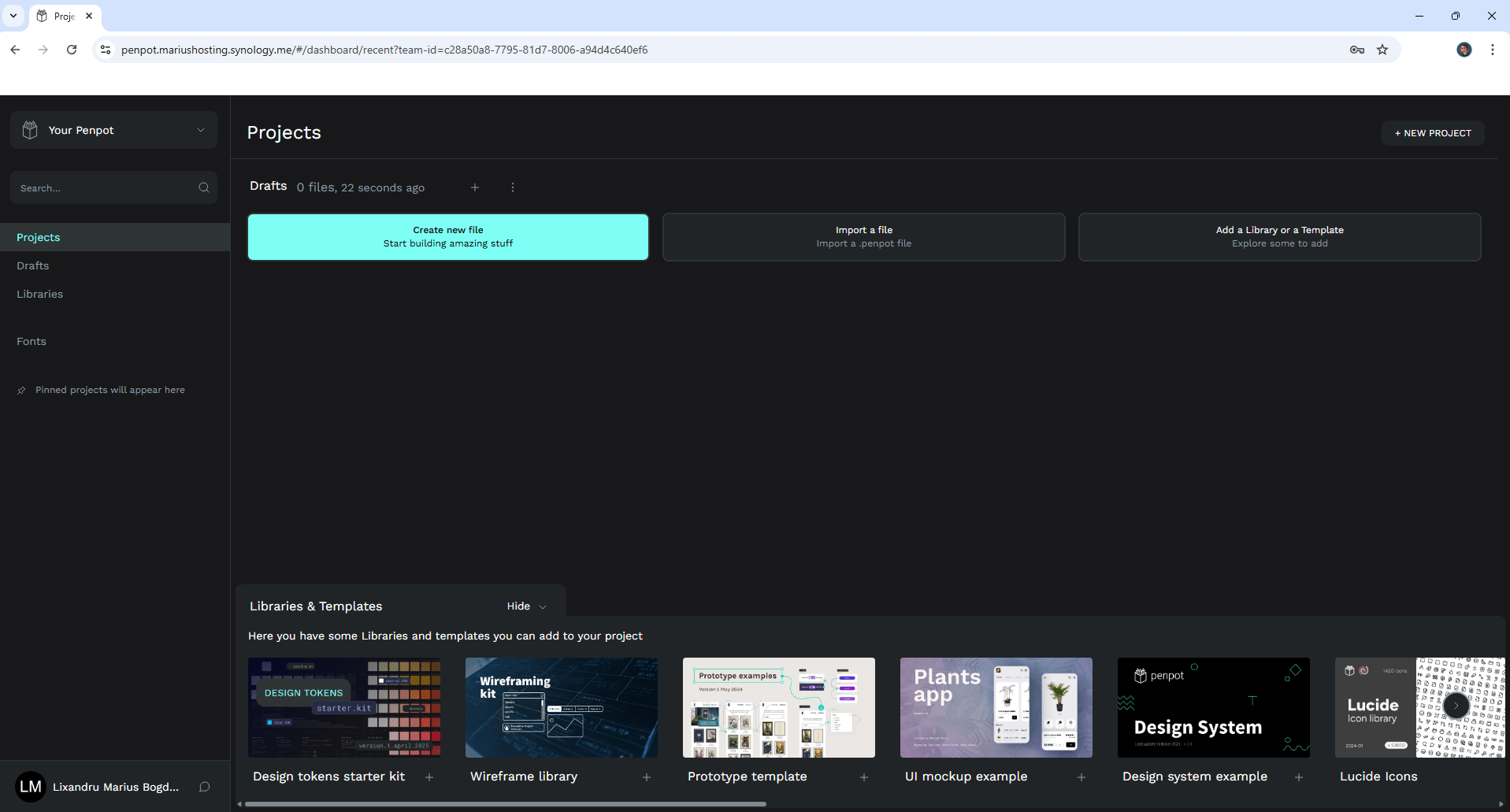
STEP 23
Your Penpot collaborative file at a glance!
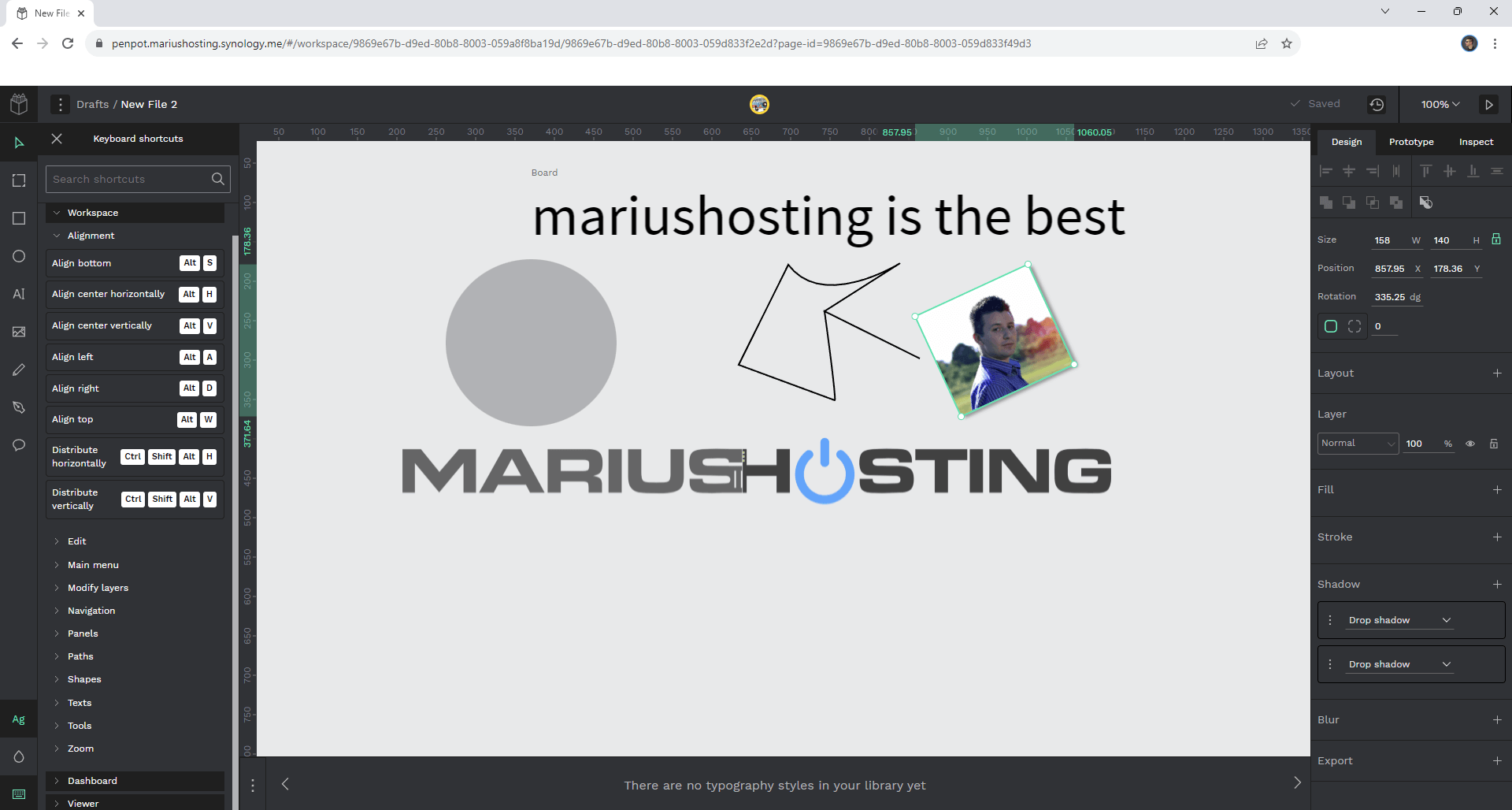
Enjoy Penpot!
If you encounter issues by using this container, make sure to check out the Common Docker issues article.
Note: Can I run Docker on my Synology NAS? See the supported models.
Note: How to Back Up Docker Containers on your Synology NAS.
Note: Find out how to update the Penpot container with the latest image.
Note: How to Free Disk Space on Your NAS if You Run Docker.
Note: How to Schedule Start & Stop For Docker Containers.
Note: How to Activate Email Notifications.
Note: How to Add Access Control Profile on Your NAS.
Note: How to Change Docker Containers Restart Policy.
Note: How to Use Docker Containers With VPN.
Note: Convert Docker Run Into Docker Compose.
Note: How to Clean Docker.
Note: How to Clean Docker Automatically.
Note: Best Practices When Using Docker and DDNS.
Note: Some Docker Containers Need WebSocket.
Note: Find out the Best NAS Models For Docker.
Note: Activate Gmail SMTP For Docker Containers.
This post was updated on Thursday / August 21st, 2025 at 12:58 PM
